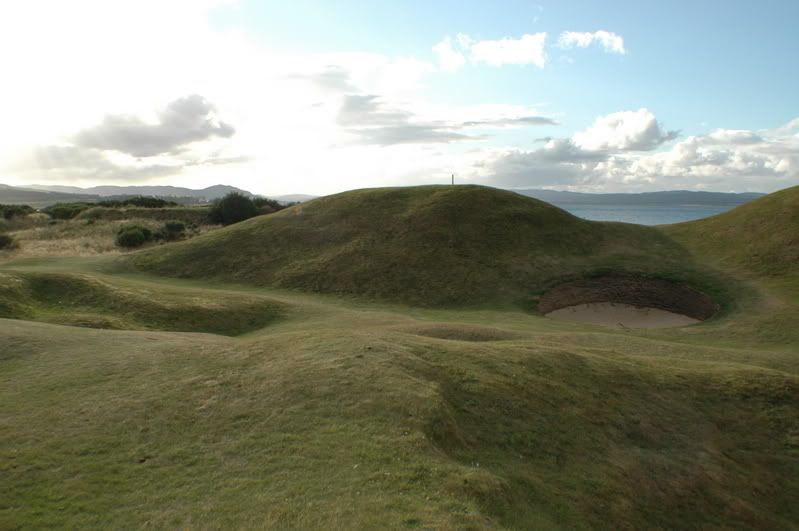In order to truly understand where we have been in the recent past with mounds doesn't it bear looking critically
at where they began and what their inspiration was originally? To get at this I submit this photo of the Alps hole at
Tain, the 380 yard par 4 hole there. To me this shows several things that respond to Jeff's original query:
1) The shape, or look, is most definitely not man-made in form. This is due to the uneven slumps and dips which is to be
expected with a natural, more or less, grassed-over sand dune. That is one of the items that separates mounding
that is "acceptable" to most on this discussion group from mounding which isn't.
2) The slope ratios are variable and not constant; as Jeff discussed up front, it is always best to feather the slopes into
the natural grade, which this dune effectively does on its own.
3) In reading through the posts here it seems like most are thinking of mounds as being of the containment variety, placed
either parallel to the play of the hole to the green, and then at the sides and rear of the putting surface. This dune, or
mound, is directly perpendicular to the line of play acting as the defining element of the hole.
So, what I think has taken place over the last 10-15 years with the advent of the New Naturalism in course construction, is
that the containment mounding of the 80's has morphed into a more refined and purposeful usage of the form, not unlike this
hole that was designed by Old Tom over a century ago.
